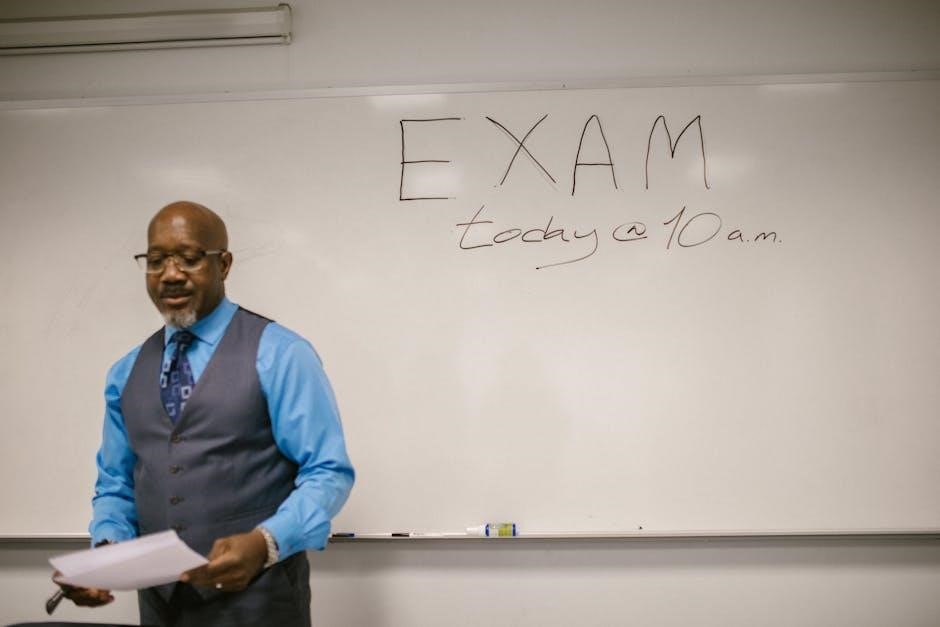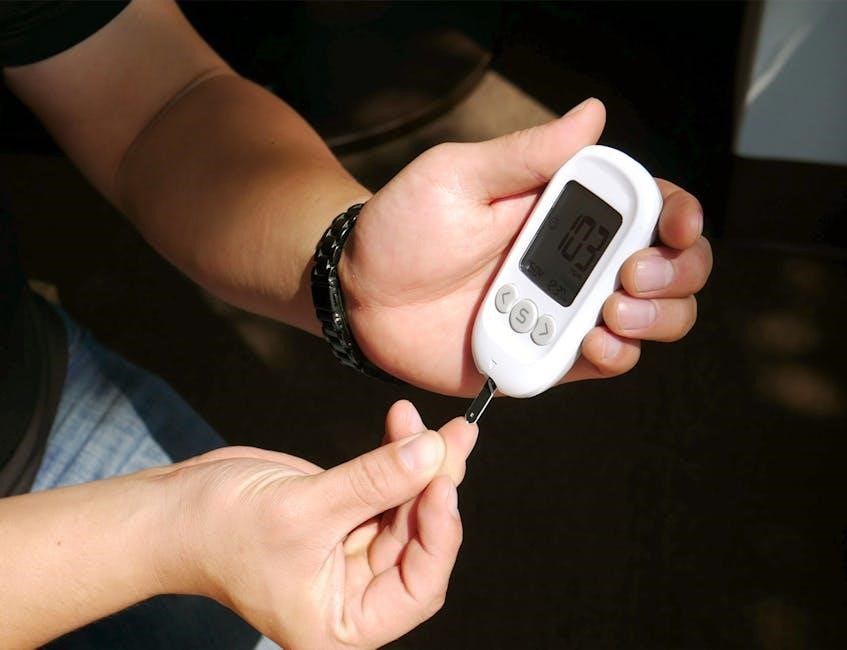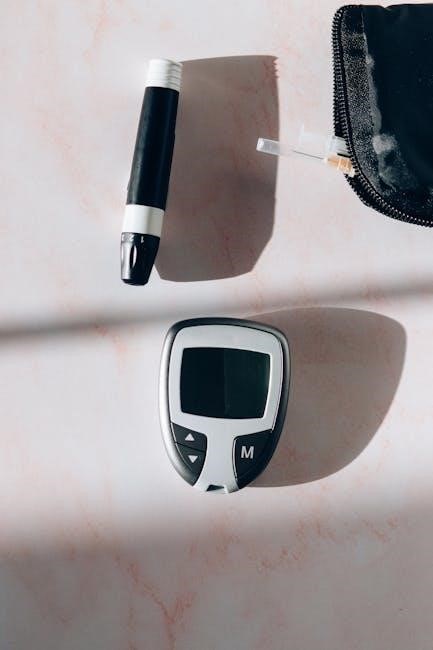Overview of the 10-Meter Walk Test (10MWT)

The 10-Meter Walk Test (10MWT) is a standardized assessment evaluating an individual’s gait speed and functional mobility over a 10-meter distance.
It is widely used in clinical and rehabilitation settings to measure walking ability, providing insights into mobility limitations and recovery progress in various patient populations.
Definition and Purpose
The 10-Meter Walk Test (10MWT) is a performance-based measure assessing gait speed over a 10-meter distance. It evaluates functional mobility and ambulation capacity, providing objective data on walking ability. The test is simple yet precise, requiring participants to walk at a comfortable or fast pace, with timing measured between marked points. Its primary purpose is to quantify walking speed in meters per second, aiding in the assessment of mobility limitations, recovery progress, and fall risk, particularly in neurological or rehabilitative populations.
Importance in Clinical and Rehabilitation Settings
The 10MWT is a valuable tool in clinical and rehabilitation settings for assessing functional mobility and gait speed. It provides reliable data on walking ability, helping clinicians evaluate recovery progress and set realistic rehabilitation goals. The test’s simplicity and minimal equipment requirements make it accessible for widespread use in various patient populations, including those with neurological or respiratory conditions, stroke survivors, and individuals with lower-limb amputations.
By quantifying walking speed, the 10MWT aids in identifying mobility limitations, monitoring recovery, and developing targeted intervention strategies, ultimately enhancing patient care and outcomes.

Key Components of the 10MWT
A clear 10-meter walkway with visible start and end points, a stopwatch or timer, and standardized instructions are essential for accurate test administration.

The test involves measuring the time taken to walk 10 meters, allowing for acceleration and deceleration phases, with specific guidelines for participant positioning and evaluator roles.
Equipment and Setup Requirements
A 10-meter walkway with clear start and end markings is essential. A stopwatch or electronic timer is used for precise timing. Ensure the surface is flat, unobstructed, and free from distractions. The test requires minimal equipment but demands accurate setup to ensure reliability. Participants should wear comfortable footwear and avoid distractions during the test. The evaluator should be trained to administer the test consistently, ensuring standardization and valid results across administrations.
Standardized Procedures for Administration
The 10MWT requires participants to walk 10 meters at a comfortable pace. Timing begins when the leading foot crosses the 2-meter mark and ends at the 10-meter mark. Participants should avoid distractions and not talk during the test. The evaluator provides no encouragement. The test is typically performed twice, with results averaged for reliability. Walking speed is calculated in meters per second. Ensure consistent administration to maintain accuracy and comparability across assessments.

Procedures for Conducting the Test
The test involves walking 10 meters at a comfortable pace, starting from a standing position. Timing begins when the leading foot crosses the 2-meter mark and ends at the 10-meter mark. Participants should avoid talking or distractions during the test. Evaluators provide no encouragement. The test is typically repeated twice, with results averaged for consistency and reliability.
Starting Position and Timing Methods
Participants begin from a standing position, walking 10 meters without assistance. Timing starts when the leading foot crosses the 2-meter mark and stops at the 10-meter mark. This method accounts for acceleration and deceleration phases, ensuring accurate measurement of gait speed. The test is typically conducted twice at both comfortable and fast paces, with results averaged for reliability. Clear floor markings and consistent evaluator instructions are essential for precise timing and valid outcomes.
Instructions for Participants and Evaluators
Participants are instructed to walk at their comfortable or fastest safe pace between the marks without distractions. Evaluators ensure the pathway is clear, provide consistent start and stop signals, and accurately record the time. Participants should avoid talking during the test, while evaluators refrain from offering encouragement. Clear instructions are given before starting, and the test is repeated to ensure reliability. Proper footwear and safety precautions are emphasized to minimize risks during the assessment.
Clinical Applications of the 10MWT
The 10MWT is widely used in rehabilitation to assess gait speed, functional mobility, and fall risk in conditions like Parkinson’s disease, stroke, and lower-limb amputations, aiding clinical decision-making.
Use in Assessing Gait Speed and Functional Mobility
The 10MWT is a reliable tool for evaluating gait speed and functional mobility in various populations, including those with Parkinson’s disease, stroke survivors, and individuals with lower-limb amputations. It provides objective measures of walking ability, helping clinicians assess mobility limitations and track progress during rehabilitation. The test’s simplicity and standardized protocol make it highly practical for clinical settings, allowing for consistent and accurate assessments of gait speed in meters per second.
Relevance for Specific Populations (e.g., Parkinson’s Disease, Stroke Survivors)
The 10MWT is particularly valuable for assessing gait speed and functional mobility in populations with neurological or motor impairments, such as those with Parkinson’s disease or stroke survivors. It helps evaluate movement ability, fall risk, and recovery progress in these groups. For individuals with Parkinson’s, the test provides insights into bradykinesia and gait variability, while for stroke survivors, it assesses ambulation capacity and readiness for community reintegration, making it a critical tool in rehabilitation planning and clinical decision-making.
Interpreting Results
The 10MWT measures gait speed in meters per second, reflecting functional mobility. Faster times indicate better cardiovascular health and mobility, while slower times suggest possible impairments requiring intervention.
Normal Walking Speed and Expected Outcomes
Normal walking speed for adults typically ranges between 1.2 to 1.5 meters per second (m/s). Faster speeds indicate better mobility and cardiovascular health. Slower speeds may suggest gait impairments or functional limitations. In clinical settings, deviations from expected norms help identify rehabilitation needs or progression in recovery. The test’s outcomes are crucial for setting realistic goals and monitoring improvements in gait speed over time.
Calculating and Documenting Walking Speed
Walking speed is calculated by dividing the 10-meter distance by the time recorded. The evaluator times the intermediate 8 meters, starting when the leading foot crosses the 2-meter mark and stopping at the 10-meter mark. The time is documented to two decimal places, and walking speed is expressed in meters per second (m/s). Two trials are typically conducted at both comfortable and fast paces, with results averaged to ensure reliability. Accurate documentation aids in tracking progress and informing rehabilitation plans.

Variations and Modifications of the Test

The 10MWT can be adapted for different populations, such as amputees or those with chronic conditions, by adjusting starting positions or using alternative timing methods; Two trials at comfortable and fast paces are often conducted, with results averaged to account for variability and ensure consistency in assessment outcomes.
Alternative Testing Methods (e.g., Fast Pace vs. Comfortable Speed)
The 10MWT can be administered at both a comfortable walking speed and a fast pace to assess different aspects of gait. The comfortable speed trial reflects everyday mobility, while the fast pace evaluates maximum capacity. Both methods are conducted over the 10-meter distance, with timing starting and stopping at the same points. This dual approach provides a comprehensive understanding of gait speed and functional mobility, aiding in tailored rehabilitation plans and progress monitoring for diverse patient populations.
Considerations for Different Patient Groups
The 10MWT is adaptable for various patient groups, including those with Parkinson’s disease, stroke survivors, and individuals with lower-limb amputations. For patients with mobility challenges, the test allows for acceleration and deceleration phases by timing the intermediate 10 meters. This ensures accurate assessment of gait speed and functional mobility. The test’s simplicity and standardization make it suitable for diverse populations, providing reliable outcomes for monitoring recovery and tailoring rehabilitation programs to individual needs.

Reliability and Validity of the 10MWT
The 10MWT demonstrates strong reliability and validity as a measure of gait speed, supported by extensive clinical evidence and standardized procedures across diverse patient populations.
Evidence Supporting Its Use in Clinical Practice
The 10MWT is widely supported by clinical evidence, demonstrating strong reliability and validity across diverse populations, including those with Parkinson’s disease and stroke survivors. Studies, such as the systematic review by Tyson and Connell (2009), highlight its robust psychometric properties, making it a trusted tool in rehabilitation settings. Consistent results across varied testing methods further reinforce its clinical utility, solidifying its role in assessing gait speed and functional mobility effectively.
Comparison with Other Mobility Assessments

The 10MWT is often compared to other mobility assessments, such as the 6-minute walk test (6MWT) and the Timed Up and Go (TUG) test. While the 6MWT measures endurance over a longer duration, the 10MWT focuses specifically on gait speed, making it more suitable for assessing short-distance walking ability. The TUG test evaluates mobility and balance but lacks the specificity of the 10MWT for gait analysis. The 10MWT’s simplicity and portability make it a preferred choice in clinical settings, complementing other assessments for a comprehensive evaluation of mobility.

Documentation and Reporting
The 10MWT results are documented in patients’ records, including walking speed in meters per second and test conditions.
This data aids in tracking progress and planning care effectively.
Recording and Interpreting Test Outcomes
Test outcomes are recorded in meters per second (m/s), with walking speed calculated by dividing distance by time.
Two trials are often averaged for reliability, ensuring accurate results for clinical decision-making.
Interpretation involves comparing results to age-related norms or baseline measurements.
Faster speeds indicate better mobility, while slower speeds may signal functional limitations.
These findings guide rehabilitation plans and track progress over time.
Integrating Results into Rehabilitation Plans
The 10MWT results provide valuable insights for tailoring rehabilitation programs, helping clinicians set realistic goals and monitor progress.
By documenting walking speed and changes over time, the test supports personalized interventions and adjusts treatment plans accordingly.
These outcomes also help justify the need for continued therapy or modifications in care, ensuring targeted and effective rehabilitation strategies for improved functional recovery.
